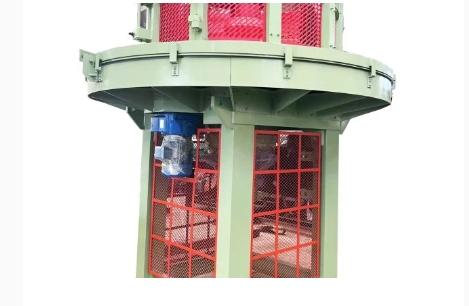the inspection interval of the vertical single screw vacuum brick extruder is a key factor for its stable operation, prevention of faults and extension of the service life of the equipment. A correct inspection and maintenance plan can promptly identify and address potential issues, thereby avoiding production disruptions and a decline in product quality. the following is a detailed discussion of the check interval time of advantages of the vertical single screw vacuum brick extruder, aiming to provide practical guidance for users.
I. The Importance and Frequency of Daily Inspections
Daily inspection contents
Daily inspection is the basis of the maintenance of the vertical single screw vacuum brick extruder, mainly including but not limited to the following aspects:
Visual inspection: Observe whether there is oil stain, dust or foreign matter on the surface of the equipment to ensure that the equipment is clean.
Operating status: Listen for the sound of the device during operation and check for any abnormal noises or vibrations.
Temperature monitoring: Check whether the temperatures of the heating and cooling systems are within the specified range and whether the temperature control is accurate.
Lubrication condition: Check the oil level and quality of the lubrication system to ensure good lubrication.
Electrical system: Check whether the electrical connections are correct to avoid electrical faults.
Check frequency
Daily inspections should be carried out daily, especially before and after startup, to ensure that the equipment is in the best working condition. For key components and vulnerable parts such as V-belts, bearings, gears, etc., the inspection frequency should be increased to promptly detect and handle wear or damage.
Ii. The Necessity and Cycle of Regular Inspections
Regular inspection contents
Regular inspection is a supplement and deepening of daily inspection, aiming to comprehensively assess the condition of the equipment and prevent potential faults. The inspection contents usually include:
Transmission system: Inspect the wear of transmission components such as gears, bearings, and V-belts, and replace them if necessary.
Heating and cooling system: Check the working status of the heating elements, cooling water channels and temperature sensors to ensure stable temperature control.
Screw and barrel: Inspect the degree of wear of the screw and barrel, and repair or replace them if necessary.
Electrical control system: Inspect the performance of electrical components such as PLC, sensors, and actuators, and control system.
Inspection cycle
The regular inspection cycle should be determined based on the usage frequency of the equipment, the working environment and the manufacturer's recommendations. Generally speaking, the regular inspection cycles of the advantages of the vertical single screw vacuum brick extruder can be divided into the following types:
Monthly inspection: Conduct a comprehensive inspection once a month, mainly checking the operation status of the transmission system, heating and cooling system, and electrical control system.
Quarterly inspection: Conduct a thorough inspection once every quarter, including wear assessment of the screw and barrel, maintenance of the electrical control system, as well as cleaning and lubrication of the entire equipment.
Annual inspection: A complete overhaul is carried out once a year, covering all inspections and maintenance of the equipment, including replacing severely worn parts, calibrating the control system, and making necessary adjustments and repairs.
Iii. Adjustment of inspection Frequency under special circumstances
In some special circumstances, such as when the equipment operates continuously for a long time, the working environment is harsh, or when producing products with high quality requirements, it may be necessary to adjust the inspection frequency. For instance, in high-temperature or high-humidity environments, the electrical and cooling systems of equipment may be more prone to failure, so the frequency of inspections needs to be increased. Similarly, when producing silicone products that meet the quality requirements, the higher the precision and stability requirements for the equipment, the more inspection and maintenance are needed.
Iv. Establish inspection and maintenance records
To determine the reliability and traceability of inspection and maintenance work, it is recommended to establish detailed inspection and maintenance records. The records should include information such as the inspection date, the inspector, the inspection content, the problems found and the handling measures. This is quite helpful for the timely discovery and handling of potential problems, and can also provide references and basis for future equipment maintenance.
To sum up, the inspection interval of the advantages of the vertical single screw vacuum brick extruder should be determined according to the actual situation of the equipment and the suggestions of the manufacturer. Through the correct daily inspection and regular inspection plans, the equipment can operate stably, prevent faults from occurring and extend its service life. Meanwhile, establishing detailed inspection and maintenance records is also an important measure to determine the feasibility and traceability of inspection work.
advantages of the vertical single screw vacuum brick extruder https://www.yxkelijixie.com/Keli-Machine-Compact-Vacuum-Extruder-A-Reliable-Solution-for-Brick-Making.html









Share this page with your family and friends.